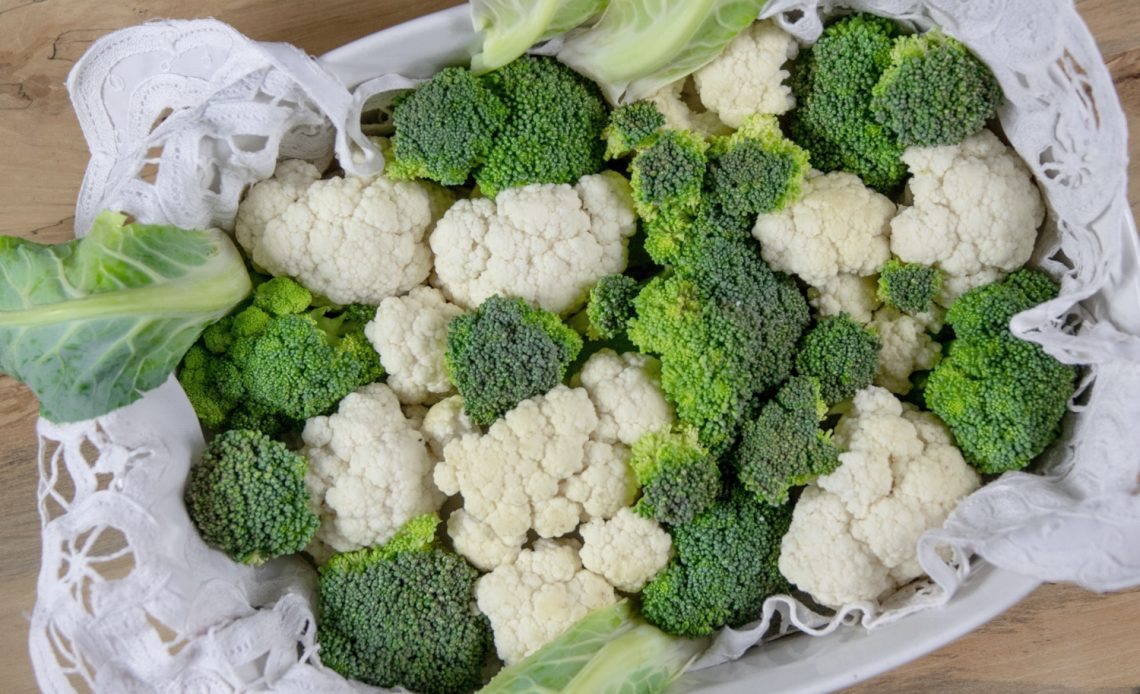

We’re here to help! Wild Yards is a completely free website that is 100% dedicated to helping you create a wildlife-friendly, sustainable yard. Read more
WildYards is reader-supported. When you buy a product through a link on our site, we may earn a comission. Every product is independently selected by our (obsessive) editors and our reviews are unbiased and objective. Read more about our mission or our privacy policy.
As is the case with so many fruits and veggies, homegrown broccoli just tastes better than store-bought. It’s crisper with a milder flavor, and, obviously, it’s much fresher, too! The same goes for cauliflower. Of course, the quality of the broccoli and cauliflower you grow in your garden can only be as good as what you put into them. As members of the Brassica family, broccoli and cauliflower are heavy feeders, and you’ve got to fertilize them accordingly. But what is the best fertilizer for broccoli and cauliflower?
Feed 5-10-10 fertilizer during transplanting to help seedlings get established. Nitrogen-rich fertilizers, like 20-0-0, stimulate rapid vegetative development, and applying 5-20-15 during flowering enables plants to produce crisp, tasty heads.
What nutrients do broccoli and cauliflower need to grow well?
Like all of the other plants in your garden broccoli and cauliflower rely on three key elements to grow their best.
- Nitrogen (N) — stimulates foliage development.
- Phosphorus (P) — supports root development, flowering, and fruiting.
- Potassium (K) — supports heat resistance and a plant’s tolerance to less-than-ideal growing conditions, like incorrect soil pH, droughts, and metal toxicity.
After transplanting, your young broccoli and cauliflower plants will have an increased need for phosphorus and potassium. Phosphorus enables seedlings to get established quickly, avoiding transplant shock, while potassium supports their immune systems.
Once the plants have taken hold in their new home, it’s time to switch gears in your fertilizing strategy.
At this point, you’ll want to start giving the plants high-nitrogen fertilizers. Nitrogen stimulates new green growth so that plants can mature quickly and healthily.
As plants begin producing flower heads, you’ll need to change fertilizers again.
Broccoli and cauliflower need ample phosphorus to produce healthy heads. During this time, their nitrogen needs decrease slightly, while their potassium needs increase. Potassium helps plants continue to grow vigorously, in spite of the rising temperatures.
It’s also worth noting that, because broccoli and cauliflower are heavy feeders, they also utilize a variety of trace minerals, like magnesium, calcium, copper, zinc, and molybdenum.
These nutrients aren’t nearly as essential as nitrogen, phosphorus, or potassium. However, they do play a role in your crop’s ability to utilize other nutrients and are used in the production of various enzymes.
Providing your crops with trace minerals in the form of kelp meal will also enhance flavor so you can grow the most delicious broccoli and cauliflower possible.
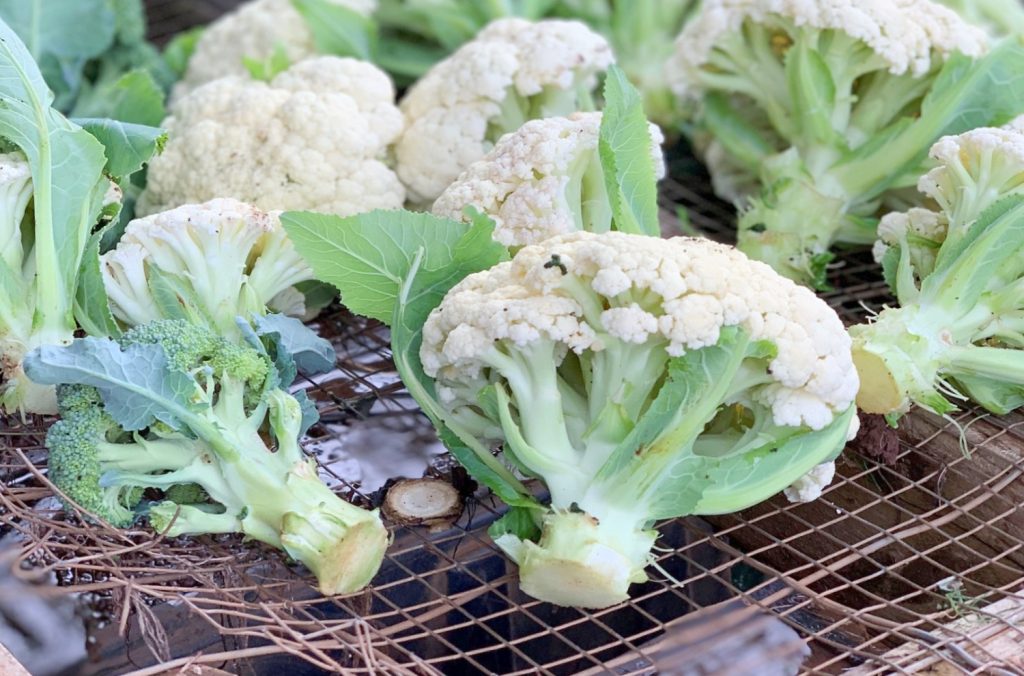
What’s the best fertilizer for broccoli and cauliflower seedlings?
How you feed your seedlings depends on how you start them. This is how we feed our young broccoli and cauliflower plants, depending on where we plant them.
Indoors in seed pots
If starting your broccoli and cauliflower crop indoors, sow seeds in peat pots at a depth of ⅛ to ¼ inch six weeks before the last scheduled frost in spring, or in late summer, if you plan on growing a fall garden.
Whatever you do, don’t skimp out and use cheap potting soil. Standard potting mixes don’t have the right amount of nutrients for heavy feeders like broccoli and cauliflower.
Instead, use a seed starting mix that includes organic fertilizers, like peat moss, compost, and worm castings.
Now, you might be tempted to cut corners here and use potting soil with a little bit of synthetic fertilizer thrown in instead of an organic seed mix. However, overapplication of chemical-based fertilizers can kill delicate young seedlings.
For this reason, we only use organic fertilizers to feed our seedlings. This provides the plants with the most absorbable forms of the nutrients they need to get a good start.
We love Epsoma Organic Seed Starter Premium Potting Mix for starting seedlings. This product is enhanced with Myco-tone, Epsoma’s proprietary blend of mycorrhizae that promotes root development and water intake, while also reducing a plant’s susceptibility to transplant shock.
Epsoma’s Organic Seed Starter consistently produces strong seedlings, whether you’re growing broccoli and cauliflower, or tomatoes, cucumbers, and squash. It provides plants with all of the nutrients they need prior to transplanting.
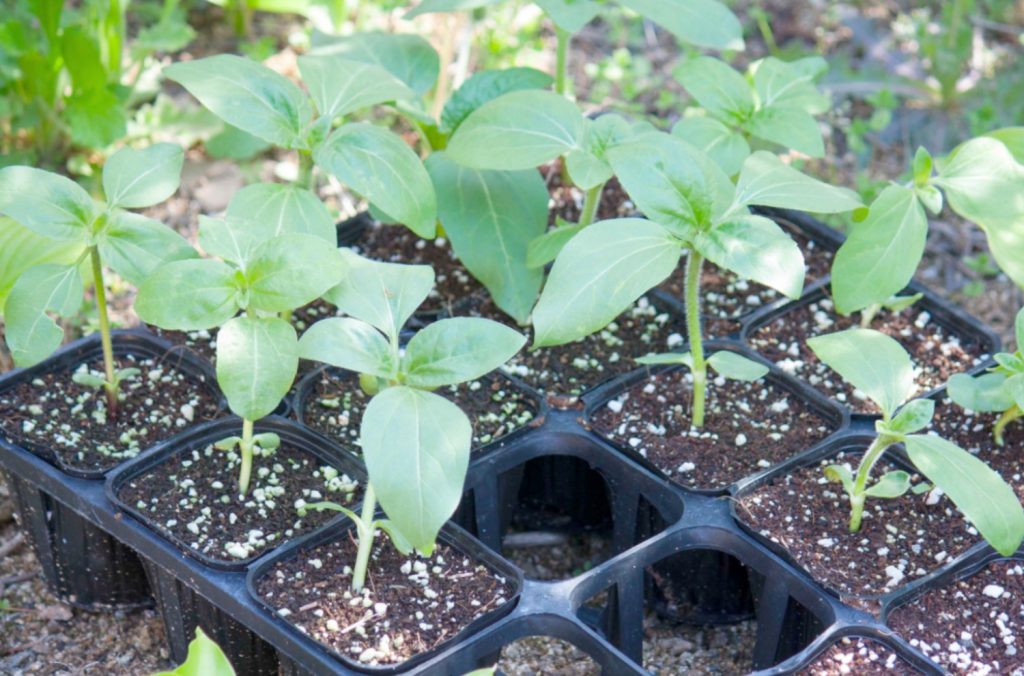
After transplanting to the garden
Once your seedlings have developed 3 to 6 sets of true leaves, and the last threat of a frost has passed, your broccoli and cauliflower sets are ready to be moved to your garden.
Space plants 18 to 24 inches apart, leaving 36 inches between rows. Because broccoli and cauliflower are such heavy feeders, you need to be sure to leave plenty of space between individual plants to prevent competition.
Feed your broccoli and cauliflower plants a fertilizer that has an NPK ratio of 5-10-10, to ensure plants have all of the nutrients they need to get established.
Whether you use synthetic fertilizer or a blend of organic fertilizers at this stage is entirely up to you.
Synthetic fertilizers have their advantages. They’re fast-acting. Plants can use them right away and start growing quickly. Unfortunately, they do nothing to promote healthy soil — and they can damage local pollinator populations, too.
We much prefer organic fertilizers. Mixing chicken manure, fish meal, and wood ash will put you close to a 5-10-10 ratio.
Organic materials support the healthy bacteria in the soil, keeping your plants healthier in the long run.
Direct-sown outdoors
If you choose to skip the previous steps and direct-sow your broccoli and cauliflower seeds outdoors, you won’t need a seed starting mix. You will, however, need to ensure your garden beds have been filled with a high-quality soil mix.
Never underestimate the power of good soil when it comes to producing a healthy garden!
Plant your seeds 2 to 3 weeks before the last frost of the season in spring, or in late summer for a fall garden.
Start by tilling your soil. You want it to be loose and fluffy, so it’s easier for seedlings to root into. Loose soil is also much easier to work with.
Once the soil has been tilled to a depth of 18 inches or so, you can either A) set the plants and feed them a synthetic fertilizer, or B) mix organic materials into the soil, and use those as your crop’s first fertilizer.
If you choose option A, then simply mix the synthetic 5-10-10 fertilizer of your choice into the loose soil prior to planting.
If you choose option B, you’ll need to dress up your garden’s soil prior to sowing seeds. Again, a mixture of chicken manure, fish meal, and wood ash should provide your plants with a 5-10-10 ratio of the nitrogen, phosphorus, and potassium they need to get started.
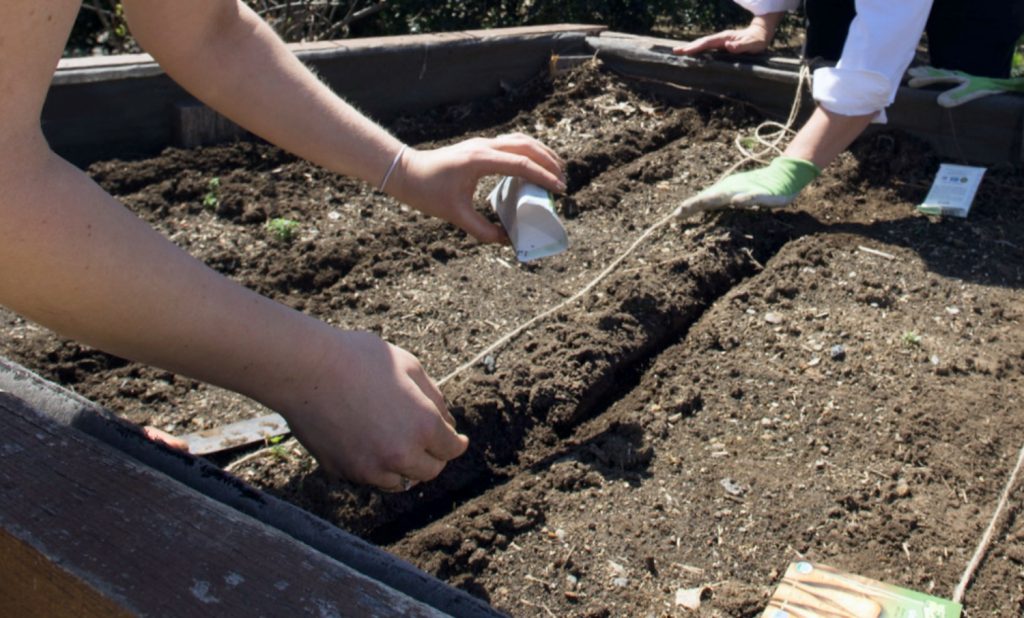
What’s the best fertilizer for broccoli and cauliflower during the vegetative stage?
Whichever method you choose to start your seedlings, caring for them is the same once they start growing out in your garden.
Early in the season, during the vegetative stage, it’s important to feed your broccoli crop with nitrogen-rich fertilizers.
Nitrogen plays a critical role in photosynthesis. Large doses of nitrogen enable your plants to develop rapidly, so they can get to the flowering stage more quickly.
Three to four weeks after transplanting, when your seedlings have matured into juvenile plants and are growing quickly, use a high-dose nitrogen fertilizer, like 15-0-0, to stimulate growth.
Nitrogen helps plants reach the flowering stage more quickly, which means these fertilizers speed up the time it takes for plants to go from seed to harvest.
Whether you choose synthetic 15-0-0 or an organic equivalent, like hoof and horn meal, is up to you. Just be sure to apply the nitrogen fertilizer every two weeks, stopping at the first sign of bud formation.
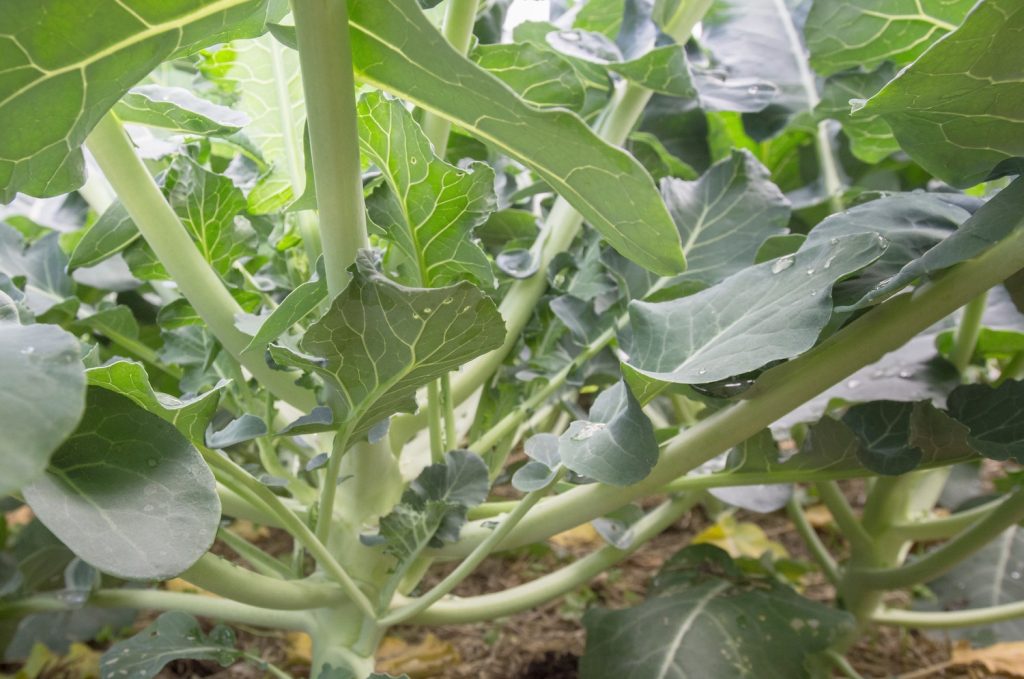
What’s the best fertilizer for broccoli and cauliflower during the flowering stage?
When you first notice flower heads, it’s time to give the plants more phosphorus. Potassium also becomes important but to a lesser degree.
Remember, we harvest the flower buds of the broccoli and cauliflower plants. To help the plants produce healthy flower heads with good color, texture, and taste, they need plenty of phosphorus.
But potassium is also necessary because while plants transition from vegetative growth to flower production, the temperatures outdoors are rising, and both broccoli and cauliflower are cool-weather crops.
Use a 5-20-15 fertilizer to feed your broccoli and cauliflower plants when the first buds appear. This helps plants produce healthy heads in spite of the rising temperatures.
Again, you can use a synthetic fertilizer or a mix of organic materials. Bone meal and wood ash will support healthy crop production at this point.
Apply your 5-20-15 fertilizer once every three weeks until your first harvest. At this point, you’ll want to apply another nitrogen-rich fertilizer to encourage shoot production so you can get another harvest later on.
Once your plants begin producing new shoots, you can repeat this fertilizing pattern, switching to phosphorus and potassium-rich fertilizers once new flower buds start popping up.
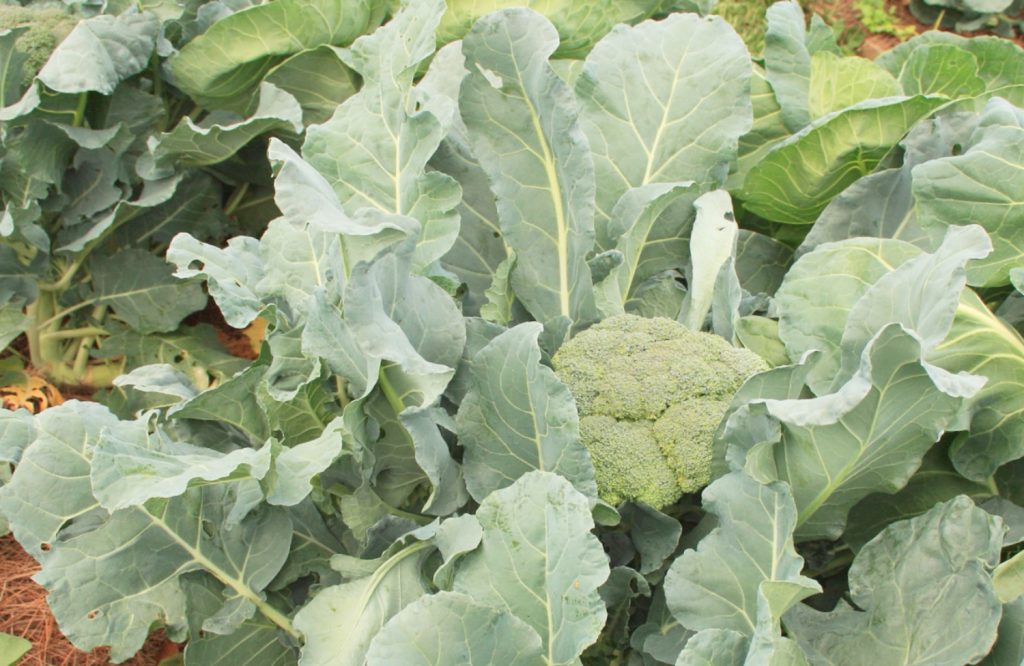
How to harvest broccoli and cauliflower
If you’ve fertilized your crops just right, then you should have plenty of broccoli and cauliflower to enjoy.
Broccoli plants produce one primary head, which emerges from the center of the plant. When fertilized well, the plants also produce multiple florets from different stems.
Cauliflower, on the other hand, produces heads that are situated if not in the center, then very close to the center of the plant. A single cauliflower plant can produce 4 to 6 heads per season.
It’s important to harvest your broccoli and cauliflower when the weather is cool. Both plants are adversely affected by warm weather and harsh direct sunlight.
Cool weather keeps both crops crisp and fresh, with a mild, slightly sweet flavor that is highly palatable. Once the temperatures get above 85, or so, the flower heads start to get bitter and tough.
Direct sunlight can also cause broccoli to develop black spots and cauliflower to turn yellow. So be sure to protect your broccoli and cauliflower from the elements while they grow.
When you’re ready to harvest, take a sharp knife or large gardening shears and simply trim the heads away from the plant, leaving about 2 inches of stem behind.
Broccoli is ready to be harvested 2 to 4 months after planting, on average. Cauliflower tends to be a bit slower, maturing in 3 to 4 months.
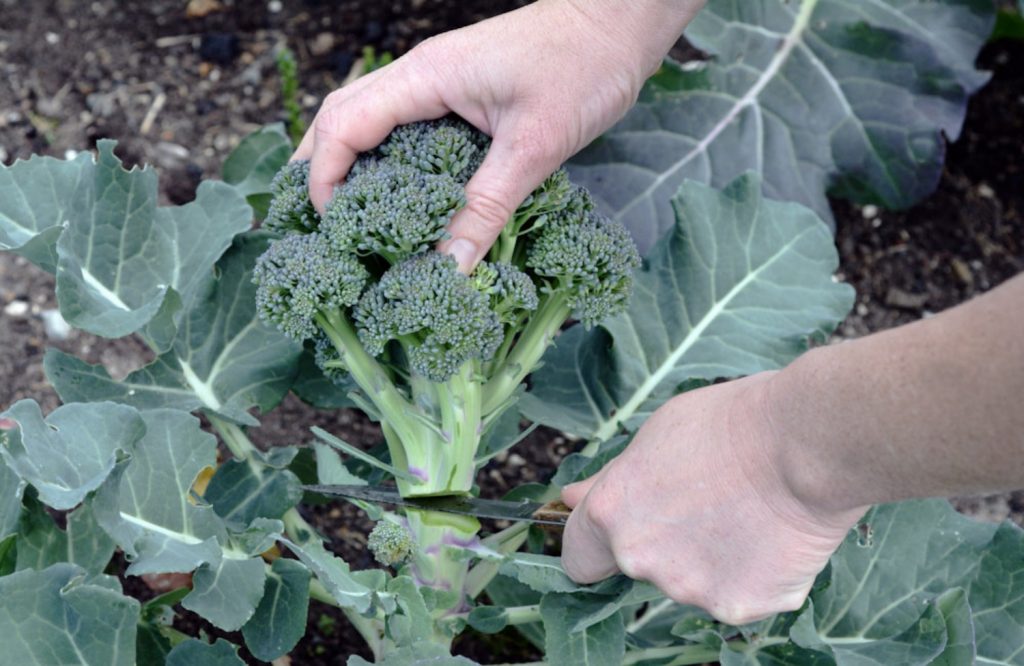
How to store broccoli and cauliflower
We’ve found that, when harvesting cauliflower, keeping the leaves on the head offers it some protection. Light is what turns white cauliflower heads yellow. So leaving the leaves allows the heads to retain their color and flavor.
Broccoli, on the other hand, isn’t quite so picky. You can trim the leaves off and add them to your compost bucket to feed the plants in your garden next season.
If you live in a cool, dry region, you can store your broccoli and cauliflower at room temperature, as long as you use it in a week or two.
Be sure to store your broccoli and cauliflower harvest in a cool, dry, dark place. Space the heads out so the air circulates around them. Moisture build-up leads to mildew, and there’s no sense in setting yourself up for failure now that you’ve spent a whole season working so hard!
If temperatures and humidity are too high for you to store your broccoli and cauliflower heads in the pantry, then simply wash them, slice them up, and store them in the crisper drawer of your refrigerator. They’ll stay fresh for 7 to 14 days.
If you have more broccoli and cauliflower than you’ll eat right away, and you’ve already shared some with your family and friends, then simply toss the extra florets into a Ziploc bag and store them in your freezer, where they’ll stay fresh for up to a year.
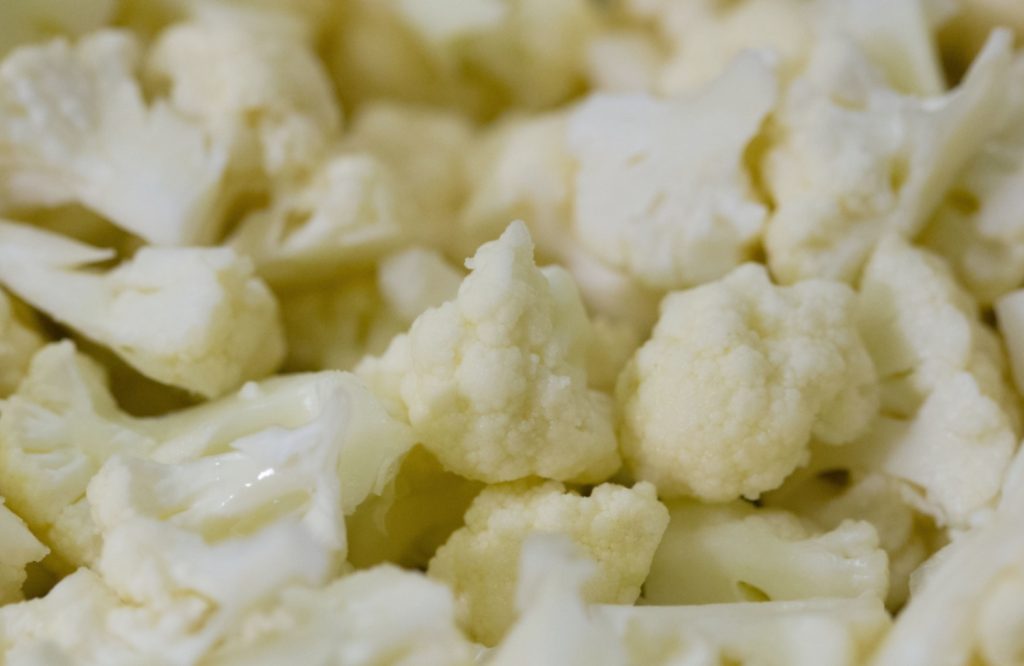
Tips for growing delicious broccoli and cauliflower
Fertilizing your broccoli and cauliflower plants isn’t the only thing you can do to keep these crops healthy.
Organic mulch can be extremely helpful when it comes to caring for broccoli and cauliflower plants. Materials like wood chips and straw provide a natural barrier between the sun and the soil surface, protecting your crops from extreme temperatures and moisture loss.
Once your broccoli and cauliflower plants start producing, harvest often, collecting heads when they measure 4 to 6 inches in diameter. Larger heads have a tough texture and bitter taste, but smaller heads are delicious!
With a little effort and the right choice of fertilizers applied at the right time, you can grow amazing broccoli and cauliflower in your very own backyard.
